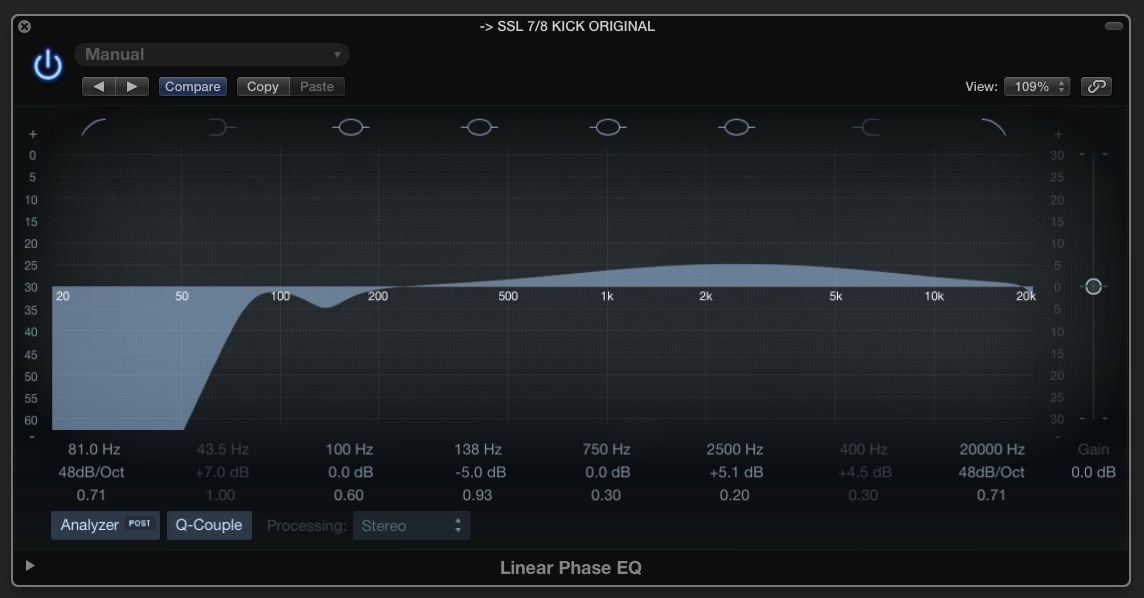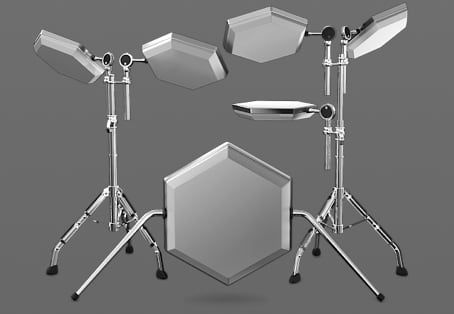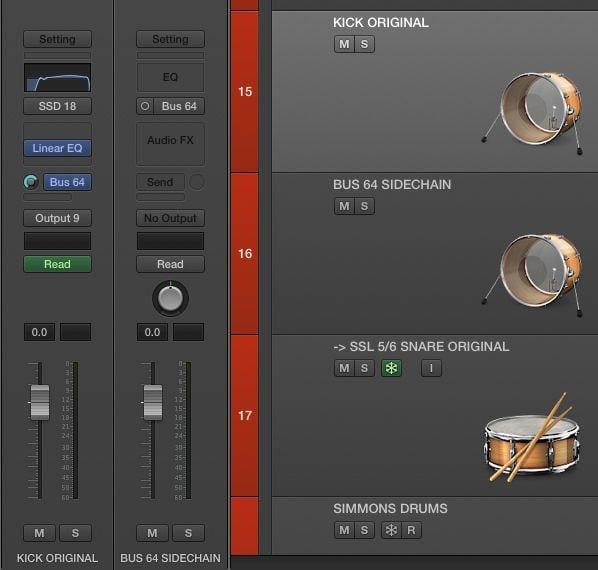This is a look into the chapter on mixing kicks, from the best-selling book “YOUR MIX SUCKS” .
The book is a Complete Mix Methodology for the entire process from DAW preparation to delivery – no bullshit, just solid audio advice that works all the time.
This post is deconstructing the components of a Kick sound, and shows you what type of „handles“ you can create to control it in the mix.
The Kick is of extreme importance, and it’s worth – as part of building your mix – to spend a few minutes creating the „handles“ to control the parameters we’re talking about in this article.
What you need to control will develop as you’re progressing with your mix, but it’s important to have those controls at hand when needed, and to know how to use them.
Before we go into detail, a few words on tuning: Prince invented a production technique for which he has rarely been credited – it’s the tuning of drum machine instruments to the key of the song.
He first used the Linn Drum LM-1 on his album “1999”, which was released October 27, 1982. The LM-1, not to be confused with Roger Linn’s later machines simply called “LinnDrum”, had a potentiometer for each drum-sound that would allow separate tuning of EACH individual drum.
Prince fearlessly tuned hats, rim shots, claps beyond the range in which they sounded anywhere near a real drum recording, but few people realised that while for example tuning a rimshot super low was certainly part of his innovative sound, the real reason behind it was him wanting to hear the entire drum set vibe along the track 100% in tune with the key of the song. That of course gave the drum machine a harmonic role in the arrangement and mix, and is also the solution to the questions how Prince got away with NOT HAVING ANY bass-guitar or bass-synth in the mix of his iconic No.1-hit “When Doves Cry”.
Carefully tuning his Linn LM-1 (using the almost hidden potentiometers on the back of the machine) was something he did on most of the songs using the Linn LM-1, which spans his albums 1999, Purple Rain, Around the World in a Day, Parade, Sign o’ the Times, Lovesexy and also the later released “The Black Album” which he recorded between Sign o’ the Times and Lovesexy. He almost exclusively tuned all drum instruments to the root-note of the song key.

Finally, the Kick sits in the middle, mono, period.
At least the direct and low end component of the Kick. If necessary, split the Kick at 300Hz, keep the fundamental and pressure point mono and only leave noise and harmonics from 300Hz upwards Stereo.
Set up a Sidechain
I recommend to always feed a sidechain bus with your Kick.
In my personal mix template, the first send in the channel strip is set to 0dB (unity gain) and sends to Bus 64.
Bus 64 doesn’t send to an output, disable the output.
The busses 64, 63, 62, 61 are my standard sidechain busses for Kick, Snare, Vocals, and whatever else needs to push other elements to the back of the mix). I’m not always using it, but when I need it, it’s already setup by default.
Without going into detail here, just know you would assign Bus 64 as your sidechain, most commonly on the bass guitar or bass synth, and push the bass a few dB back, triggered by the sidechain signal.
Again, Logic Pro’s standard compressor works great for that, but this technique works of course very well with a multiband compresspr/EQ like the „Waves C6 Sidechain“.
There is of course a lot more to be said on this topic, but the techniques above will give you the handles on important parameters.
Please keep in mind that having the handles in place doesn’t mean to have to use and tweak all of them.
There are some genius producers out there who deliver Kicks that are sitting perfectly in the mix.
In that case, turn it up and be done.
[convertkit form=5236308]





















